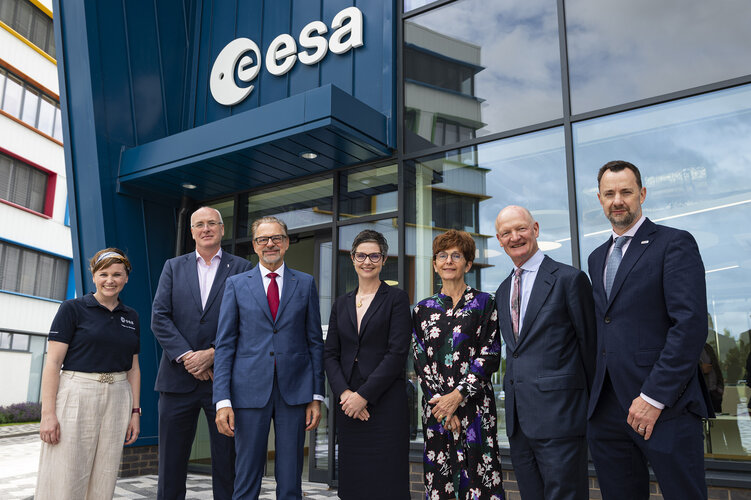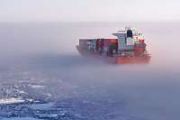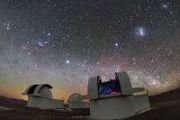
Copernical Team
Saudi Space Commission holds several meetings with Chinese space companies
 The Saudi Space Commission (SSC) delegation visiting China held several bilateral meetings with government agencies, Chinese companies, and leaders of the space sector to discuss ways to enhance cooperation and build strategic partnerships in space technologies and industry and its future sectors in a way that serves common interests.
Chairman of the Board of Directors of SSC, Eng. Abdulla
The Saudi Space Commission (SSC) delegation visiting China held several bilateral meetings with government agencies, Chinese companies, and leaders of the space sector to discuss ways to enhance cooperation and build strategic partnerships in space technologies and industry and its future sectors in a way that serves common interests.
Chairman of the Board of Directors of SSC, Eng. Abdulla Teledyne e2v Space Imaging celebrates the success of its sensors as Aeolus de-orbits
 Teledyne e2v Space Imaging, part of the Teledyne Technologies, is proud to have designed and built sensors for Aeolus, the first ESA satellite mission to acquire profiles of Earth's wind on a global scale.
Named after the Greek god of the winds, Aeolus is the fifth satellite in the Living Planet Programme of the European Space Agency. It has become one of the highest impact-per-observation
Teledyne e2v Space Imaging, part of the Teledyne Technologies, is proud to have designed and built sensors for Aeolus, the first ESA satellite mission to acquire profiles of Earth's wind on a global scale.
Named after the Greek god of the winds, Aeolus is the fifth satellite in the Living Planet Programme of the European Space Agency. It has become one of the highest impact-per-observation Tensions on Earth don't have to affect outer space diplomacy
 If the United States and the former Soviet Union could cooperate on space efforts during the Cold War, then tensions between nations on Earth today don't have to extend to diplomacy and agreements governing outer space.
That's according to speakers at a recent webinar organized by the Space Diplomacy Lab at Duke, part of the university's Rethinking Diplomacy program.
"Plans to have R
If the United States and the former Soviet Union could cooperate on space efforts during the Cold War, then tensions between nations on Earth today don't have to extend to diplomacy and agreements governing outer space.
That's according to speakers at a recent webinar organized by the Space Diplomacy Lab at Duke, part of the university's Rethinking Diplomacy program.
"Plans to have R Space for travellers

As the 2023 summer holiday season gets under way, ESA and Amsterdam’s international airport are once again giving travellers a chance to discover some out-of-this-world destinations.
ESA unveils its new events venue in the UK

A state-of-the-art conference centre that will support the thriving UK space industry has opened at Harwell campus in Oxfordshire.
Sino-European joint space mission enters flight model phase
 A China-Europe joint space mission, Solar Wind Magnetosphere Ionosphere Link Explorer (SMILE), has entered the flight model phase in an all-around way, according to the National Space Science Center (NSSC) under the Chinese Academy of Sciences (CAS).
After a four-day discussion and consultation, the review experts unanimously agreed that SMILE has successfully passed the critical design re
A China-Europe joint space mission, Solar Wind Magnetosphere Ionosphere Link Explorer (SMILE), has entered the flight model phase in an all-around way, according to the National Space Science Center (NSSC) under the Chinese Academy of Sciences (CAS).
After a four-day discussion and consultation, the review experts unanimously agreed that SMILE has successfully passed the critical design re ASU scientist uses NASA MESSENGER mission data to measure chromium on Mercury
 The origin of Mercury, the closest planet to the sun, is mysterious in many ways. It has a metallic core, like Earth, but its core makes up a much larger fraction of its volume - 85% compared to 15% for Earth.
The NASA Discovery-class MESSENGER (Mercury Surface, Space Environment, Geochemistry and Ranging) mission, and first spacecraft to orbit Mercury, captured measurements revealing that
The origin of Mercury, the closest planet to the sun, is mysterious in many ways. It has a metallic core, like Earth, but its core makes up a much larger fraction of its volume - 85% compared to 15% for Earth.
The NASA Discovery-class MESSENGER (Mercury Surface, Space Environment, Geochemistry and Ranging) mission, and first spacecraft to orbit Mercury, captured measurements revealing that Study increases probability of finding water on other worlds by x100
 A new analysis shows that there are probably many more Earth-like exoplanets with liquid water than had been thought, significantly increasing the chance of finding life. The work finds that even where the conditions are not ideal for liquid water to exist at the surface of a planet, many stars will harbour geological conditions suitable for liquid water under the planet's surface.
Present
A new analysis shows that there are probably many more Earth-like exoplanets with liquid water than had been thought, significantly increasing the chance of finding life. The work finds that even where the conditions are not ideal for liquid water to exist at the surface of a planet, many stars will harbour geological conditions suitable for liquid water under the planet's surface.
Present Studying rivers from worlds away
 Rivers have flowed on two other worlds in the solar system besides Earth: Mars, where dry tracks and craters are all that's left of ancient rivers and lakes, and Titan, Saturn's largest moon, where rivers of liquid methane still flow today.
A new technique developed by MIT geologists allows scientists to see how intensely rivers used to flow on Mars, and how they currently flow on Titan. T
Rivers have flowed on two other worlds in the solar system besides Earth: Mars, where dry tracks and craters are all that's left of ancient rivers and lakes, and Titan, Saturn's largest moon, where rivers of liquid methane still flow today.
A new technique developed by MIT geologists allows scientists to see how intensely rivers used to flow on Mars, and how they currently flow on Titan. T Advanced Space Commemorates One Year Since CAPSTONE Separation
 It's been one year since CAPSTONE separated from its launch vehicle to become the first commercial spacecraft operating at the Moon. Advanced Space is grateful to our team members and proud of all their accomplishments!
b>A Rocky Start br> /b>
One year ago, we were sweating a bit. On July 4, after CAPSTONE separated from its launch vehicle, it had deployed its solar arrays; started charg
It's been one year since CAPSTONE separated from its launch vehicle to become the first commercial spacecraft operating at the Moon. Advanced Space is grateful to our team members and proud of all their accomplishments!
b>A Rocky Start br> /b>
One year ago, we were sweating a bit. On July 4, after CAPSTONE separated from its launch vehicle, it had deployed its solar arrays; started charg 




























